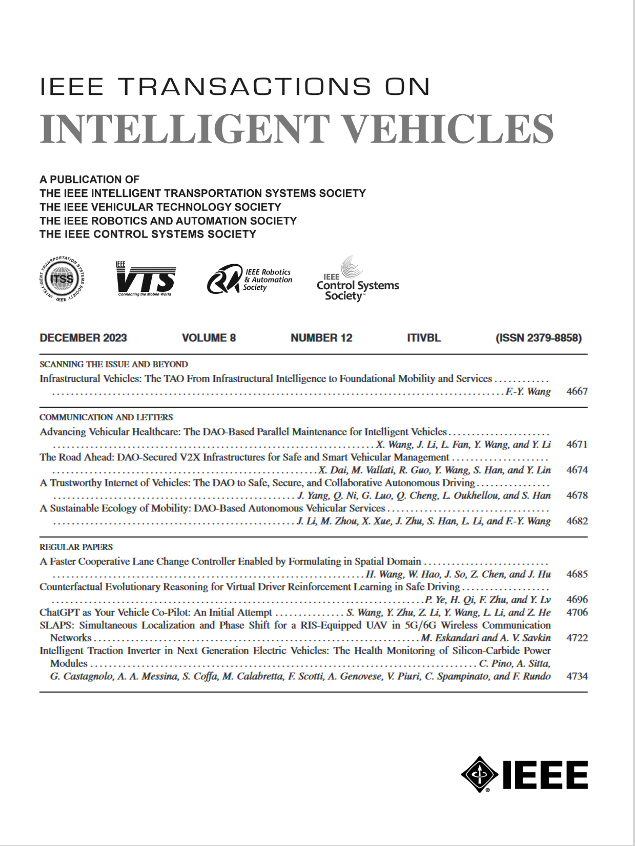AEFusion: An Attention-Based Ensemble Learning Approach for BEV Fusion Perception in Autonomous Modular Buses
IF 14.3
1区 工程技术
Q1 COMPUTER SCIENCE, ARTIFICIAL INTELLIGENCE
引用次数: 0
Abstract
Autonomous modular buses (AMB) are considered a promising solution to the challenges in public transportation, as they can reduce commute times, enhance transfer convenience, and address supply-demand imbalances in transportation systems. Nonetheless, current research mainly focuses on operational aspects, whereas the high precision required for in-transit docking remains a critical challenge for implementation. The accuracy of current autonomous driving perception systems is often limited due to errors introduced by multi-sensor fusion methods. To address this issue, this paper introduces an attention-based ensemble learning fusion method (AEfusion) which includes a supervision module that utilizes the more accurate depth information from LiDAR to guide the generation of image depth information. Additionally, the fusion module incorporates two enhanced channel attention blocks and a spatial attention block to strengthen feature learning and integration. Experiments on both the nuScenes dataset and a self-collected dataset demonstrate that our method is suited for full-range docking perception in AMBs and is superior to the existing approaches.AEFusion:一种基于注意力的集成学习方法,用于自主模块化客车的纯电动汽车融合感知
自动模块化公交车(AMB)被认为是解决公共交通挑战的一个有希望的解决方案,因为它们可以减少通勤时间,提高换乘便利性,并解决交通系统中的供需失衡问题。然而,目前的研究主要集中在操作方面,而对过境对接的高精度要求仍然是实现的关键挑战。当前自动驾驶感知系统的精度往往受到多传感器融合方法引入的误差的限制。为了解决这一问题,本文引入了一种基于注意力的集成学习融合方法(AEfusion),该方法包括一个监督模块,该模块利用来自激光雷达的更准确的深度信息来指导图像深度信息的生成。此外,融合模块还包含两个增强的通道注意块和一个空间注意块,以加强特征学习和整合。在nuScenes数据集和自采集数据集上的实验表明,我们的方法适合于AMBs的全范围对接感知,并且优于现有的方法。
本文章由计算机程序翻译,如有差异,请以英文原文为准。
求助全文
约1分钟内获得全文
求助全文
来源期刊

IEEE Transactions on Intelligent Vehicles
Mathematics-Control and Optimization
CiteScore
12.10
自引率
13.40%
发文量
177
期刊介绍:
The IEEE Transactions on Intelligent Vehicles (T-IV) is a premier platform for publishing peer-reviewed articles that present innovative research concepts, application results, significant theoretical findings, and application case studies in the field of intelligent vehicles. With a particular emphasis on automated vehicles within roadway environments, T-IV aims to raise awareness of pressing research and application challenges.
Our focus is on providing critical information to the intelligent vehicle community, serving as a dissemination vehicle for IEEE ITS Society members and others interested in learning about the state-of-the-art developments and progress in research and applications related to intelligent vehicles. Join us in advancing knowledge and innovation in this dynamic field.
 求助内容:
求助内容: 应助结果提醒方式:
应助结果提醒方式:


